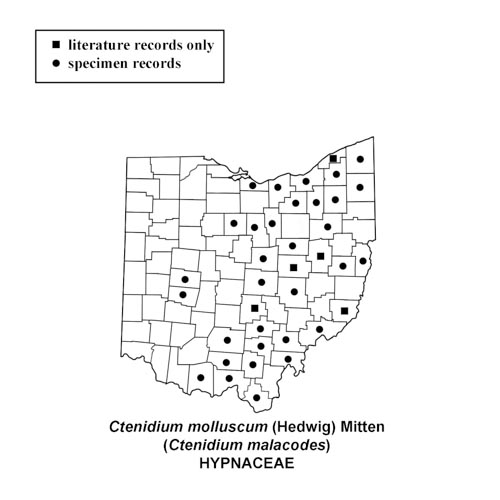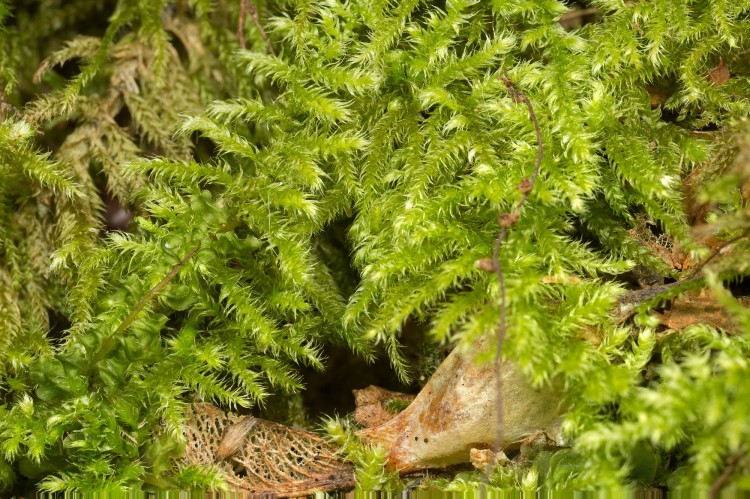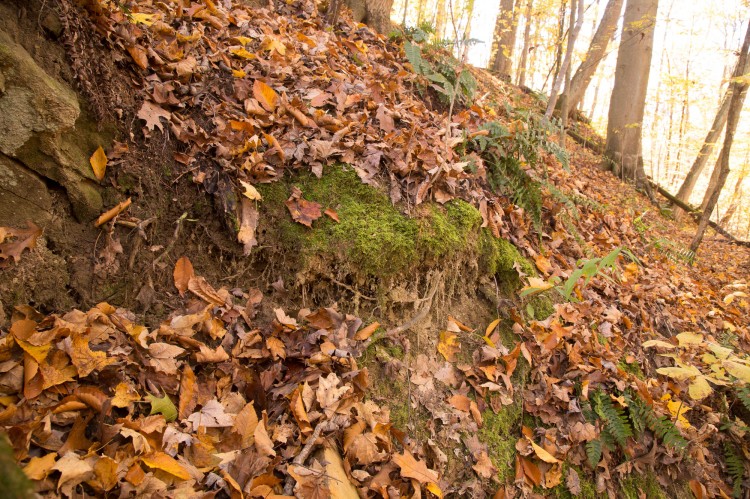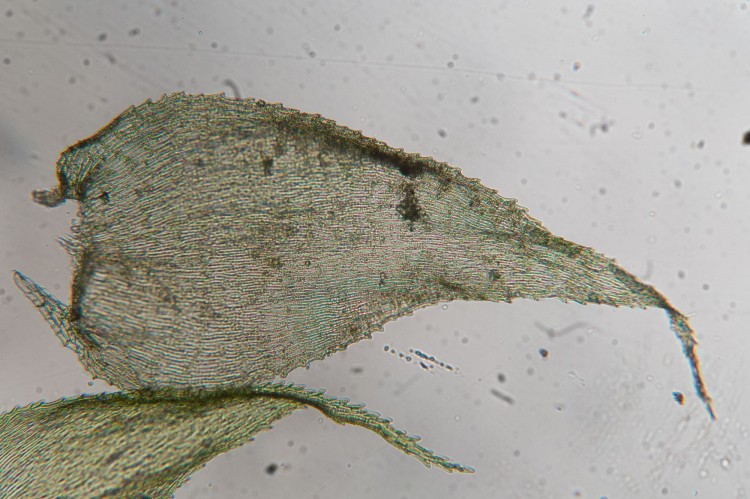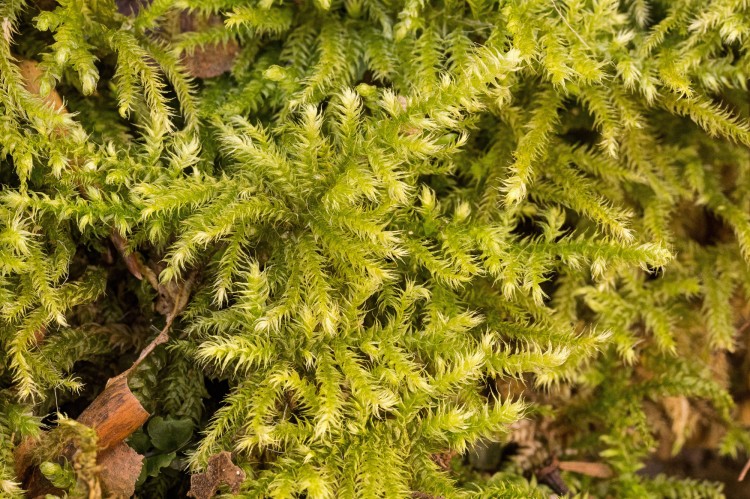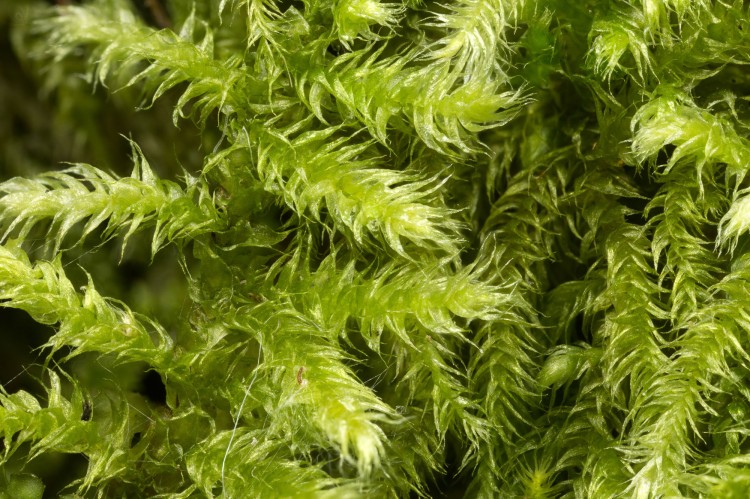Ctenidium molluscum
“comb moss”
How to recognize comb moss: This moss grows in mats with short pinnate branches. The stem leaves are 1-2 mm long, and have broad bases with large alar cells that extend down the stem in decurrencies. The branch leaves are narrower and mostly all bent in one direction, although the long tips sometimes give the plant a combed or an every-which-way look. Under the microscope you can see the teeth on the long tip of the leaf and the short double costa, and the very characteristic appearance of the leaf with the abruptly acuminate bent sideways leaf tip and the broad triangular base curving down to the sides of the stem in decurrencies. Under the microscope by looking at a branch, you can find on the back of the branch leaves little bumps at the upper ends of the cells. These are a special kind of papillae, and the cells are called prorate or prorulose depending on how big or small the bumps are.
Where to find comb moss: It is found in much of the eastern United States on soil in forests and in the north on rotten logs, swampy calcareous habitats, and wet humus.